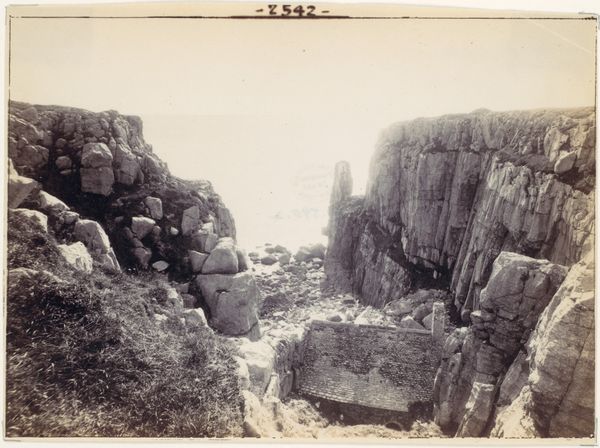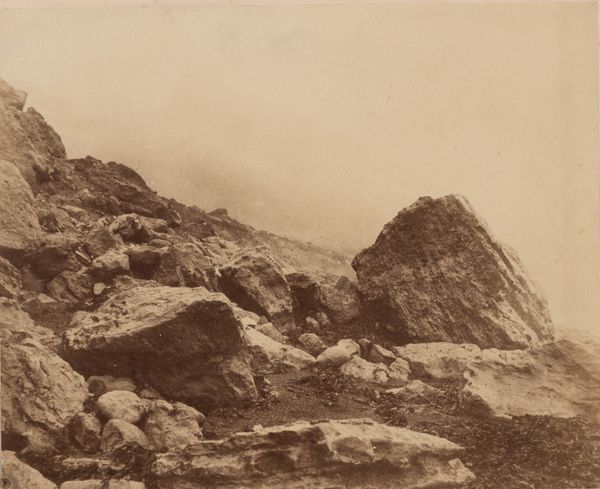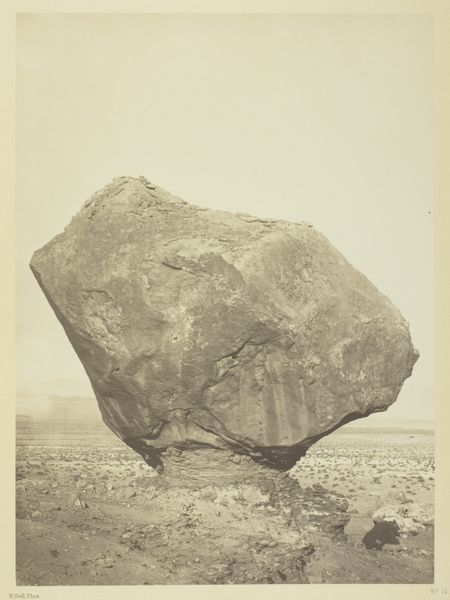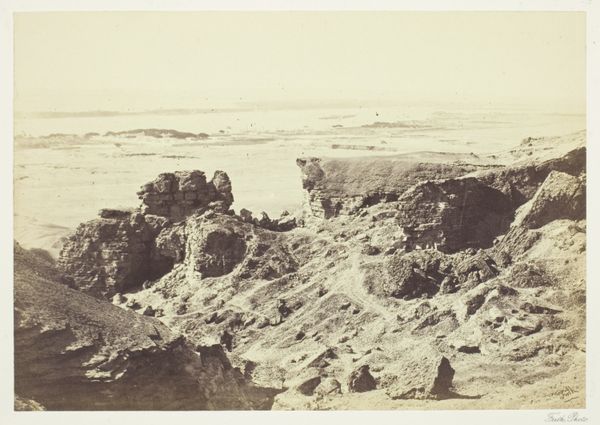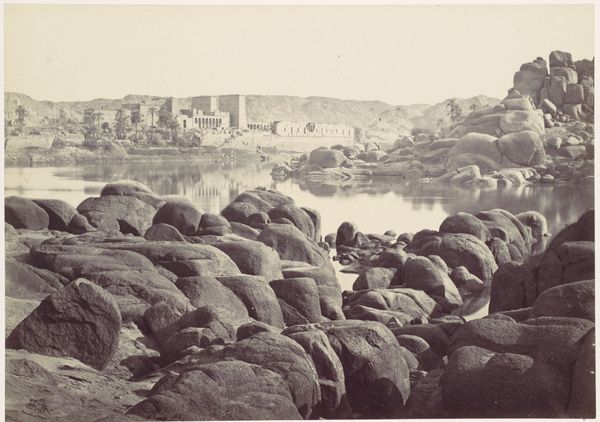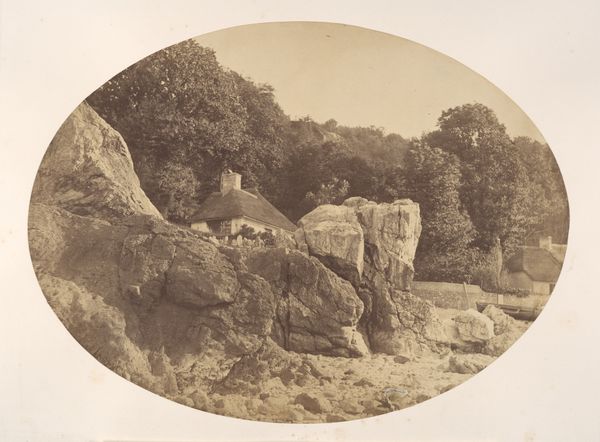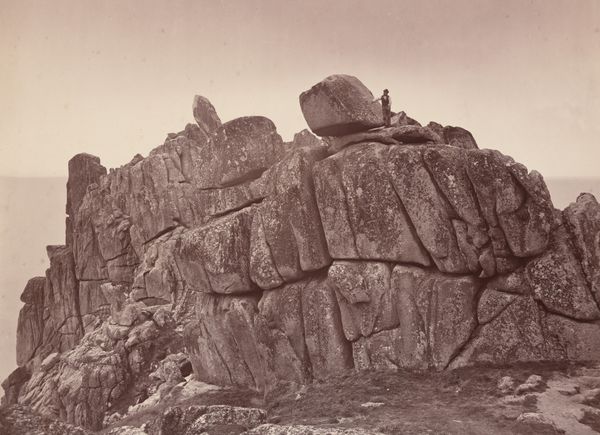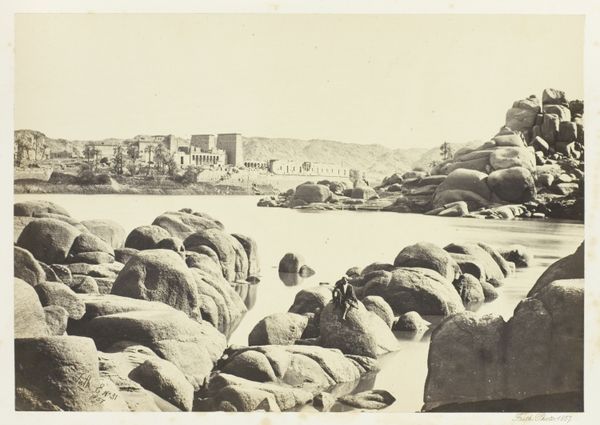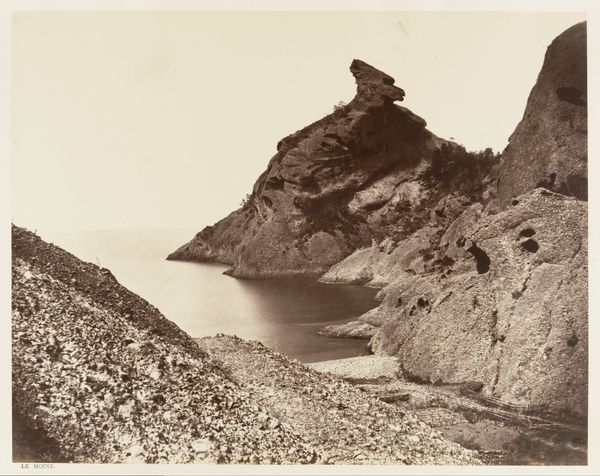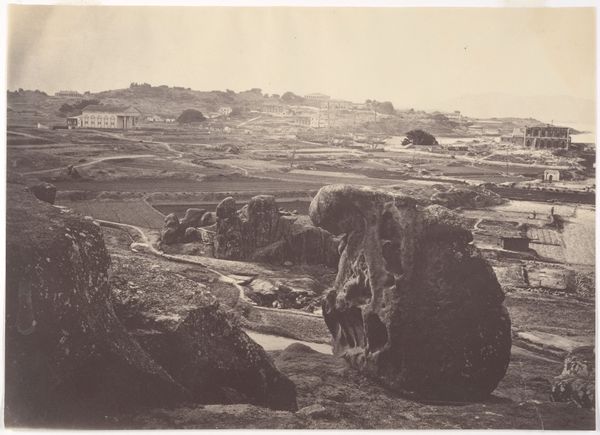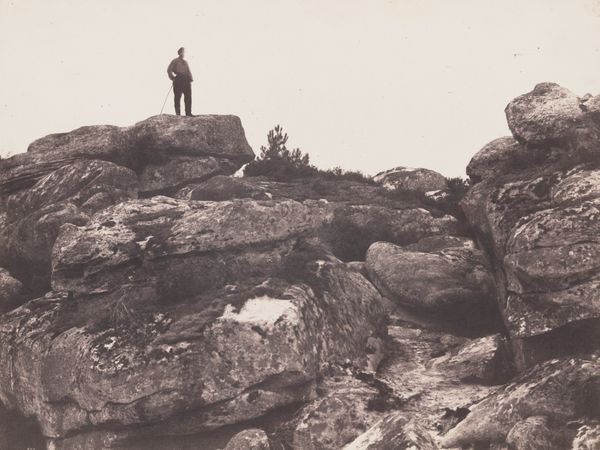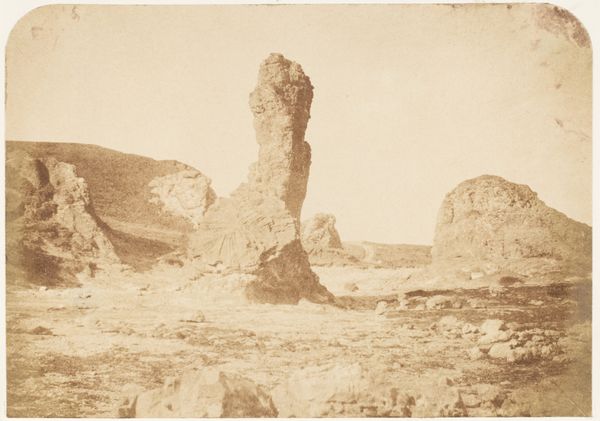
photography, albumen-print
#
excavation photography
#
natural shape and form
#
organic shape
#
asian-art
#
landscape
#
photography
#
naturalism
#
albumen-print
#
realism
#
shadow overcast
Dimensions: Image: 6 3/4 × 9 3/16 in. (17.1 × 23.3 cm)
Copyright: Public Domain
Editor: This is John Thomson’s "Peculiar shaped Rocks on Kulangsu Island, Amoy," an albumen print from 1869. There's a certain stillness to it, a feeling of immense geological time captured in these huge boulders. What strikes you about this work? Curator: What I find compelling is how these rocks, frozen in time, almost act as natural temples. Their forms evoke a sense of the monumental, reminding us of enduring strength. Kulangsu Island, then as now, was a place of cultural exchange. The rocks could be seen as symbols of resilience, standing witness to centuries of interaction and transformation. What feelings do their shapes evoke in you? Do you perceive any specific animal or human form suggested in their outlines? Editor: I can see a kind of stoic face in the rock formation on the right! Maybe a weathered guardian. So, do you think Thomson was intentionally trying to portray these rocks as something more than just...rocks? Curator: Absolutely! Thomson was a keen observer of cultural nuance. He chose this perspective to highlight not just their physical peculiarity, but their symbolic resonance within the landscape. These geological formations, shaped by time and elements, mirror the shaping of cultural identities through history. Don't you agree there's a layered narrative suggested here? Editor: I do. Thinking about it, it is more than a straightforward landscape photograph; it suggests a deeper story about the island itself and time, almost a geological portrait of cultural memory. Curator: Exactly. It is a powerful convergence of nature, culture, and memory—captured in a single, lasting image. Editor: That’s fascinating; it really makes me think about how we project meaning onto the natural world around us. Thanks for that insight!
Comments
No comments
Be the first to comment and join the conversation on the ultimate creative platform.
